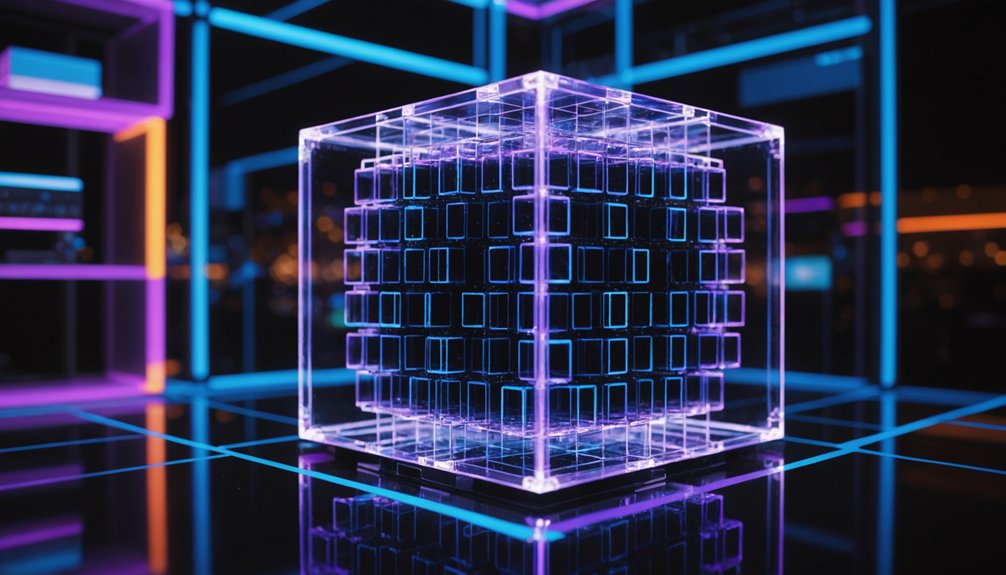Tensors are multi-dimensional arrays that power modern AI – think steroids for data. These mathematical constructs handle complex information in multiple dimensions, unlike boring old regular numbers. They're why your phone recognizes faces and Alexa understands your mumbling. Without tensors, self-driving cars would crash, Netflix recommendations would suck, and AI would basically be nonexistent. The hardware giants aren't building GPUs and TPUs for nothing.

The backbone of modern artificial intelligence isn't some sci-fi robot brain—it's math. Tensors, specifically. These multidimensional arrays are the workhorses behind every impressive AI advancement you've seen lately. Not just fancy matrices or vectors on steroids, tensors represent data in higher dimensions, making them perfect for the complex computations needed in deep learning. They're basically the digital clay that AI systems mold into intelligence.
Behind every AI breakthrough lies not code wizardry, but the mathematical magic of tensors—the multidimensional data structures powering modern intelligence.
Think of tensors as containers. They store numbers, images, sound, text—basically anything that can be represented numerically. And AI is hungry for numbers. Lots of them. A tensor's rank indicates how many dimensions it has. Scalars are rank-0 tensors (just a single value). Vectors are rank-1. Matrices are rank-2. Beyond that? Welcome to the tensor party where things get interesting. The model training process requires clean, properly formatted tensor data to achieve optimal results.
These mathematical constructs are why your phone recognizes your face, Alexa understands your mumbling, and self-driving cars don't crash into trees. Every time a neural network processes information, tensors are there, shuttling data through the computational pipeline. Neural networks literally couldn't function without them. Autonomous agents leverage these tensor operations to make independent decisions and execute complex tasks.
Hardware manufacturers got the memo years ago. GPUs and TPUs? They're basically tensor-processing machines. TensorFlow wasn't named that by accident. The framework leverages tensors to optimize computations across different devices, from your smartphone to massive cloud servers. Business executives are increasingly relying on tensor-based AI for strategic investments to drive innovation and growth in competitive markets.
In practical terms, tensors enable AI to handle the massive datasets required for training sophisticated models. They're essential in image recognition, allowing convolutional neural networks to analyze visual data pixel by pixel. In natural language processing, they represent text and semantic relationships. Healthcare systems use tensors to analyze medical imaging. Even your Netflix recommendations? Tensors, calculating what you might like based on what you've watched.
The future of AI will continue to ride on tensors. They're not just important—they're fundamental. No tensors, no modern AI. It's that simple. TensorFlow's underlying data flow graphs make processing these tensors incredibly efficient by representing operations as nodes and the tensors themselves as edges.
Frequently Asked Questions
How Do Tensors Differ From Matrices and Vectors?
Tensors are multi-dimensional powerhouses, while matrices are stuck in 2D land and vectors in 1D. Simple as that.
They handle complex data structures that matrices can't touch. Tensors support fancy operations beyond basic matrix multiplication. In the computing world, they're faster and more efficient too.
Deep learning frameworks love them for a reason. Matrices and vectors? Just special cases of tensors, really.
Can Tensors Be Visualized Effectively for Higher Dimensions?
Visualizing higher-dimensional tensors is tough. Really tough. Researchers use dimensional reduction techniques like PCA and t-SNE to squash them into 2D or 3D representations.
But let's face it—information gets lost. Tools like HyperTools and Plotly help, creating interactive visualizations that make the incomprehensible slightly less so.
Still, human perception stops at three dimensions. The rest? Abstract concepts we struggle to grasp visually. Not ideal, but it's what we've got.
Which Tensor Operations Are Most Crucial for Neural Networks?
Matrix multiplication tops the list for neural networks – it's their bread and butter. Affine transformations combine this with translations.
Can't forget activation functions like ReLU either; they're what give networks their power.
Backpropagation? Wouldn't work without automatic differentiation. Element-wise operations keep things running smoothly.
And sweep operations? They're the unsung heroes handling tensors of different dimensions. Hardware's getting better at these computations too.
How Does Tensor Hardware Acceleration Impact AI Development?
Tensor hardware acceleration revolutionizes AI development. Period.
GPUs with tensor cores and TPUs slash training times—sometimes 30x faster than conventional processors. Developers can now iterate quickly, experiment more, and tackle massive models that were previously impossible.
The ripple effects? Real-time inference capabilities. Cost-effective scaling. Entire industries transformed overnight.
Without this specialized hardware, today's AI juggernauts would still be theoretical concepts gathering dust in research papers.
Are There Alternatives to Tensors for Deep Learning Computation?
Alternatives to tensors do exist. Decision trees, support vector machines, and graph-based models don't rely on tensor operations. Quantum computing offers a completely different framework. Distributed computing models provide another approach.
But let's be real—tensors dominate for a reason. They're efficient for parallel processing and matrix math. Non-tensor approaches often struggle with complex pattern recognition. The AI world isn't abandoning tensors anytime soon.




